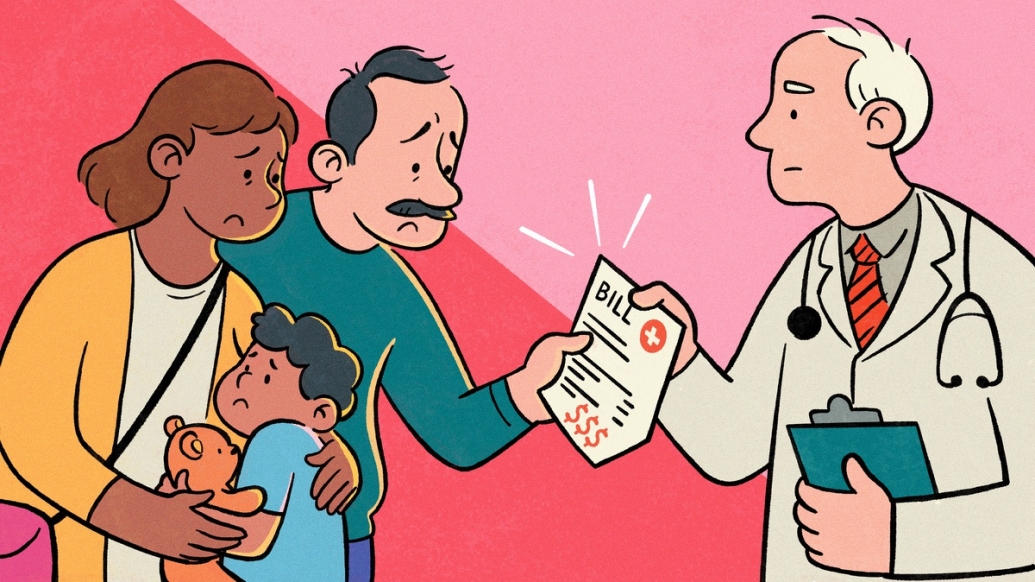For 1 in 7 pediatric hospitalizations, the out-of-pocket cost exceeds $3,000, a study suggests
11:00 AM
Author |

After a child’s hospital stay, many families covered by private insurance may experience sticker shock – on average spending $1,300 out of pocket – a study suggests.
For one in seven families, the price tag is even higher, exceeding $3,000.
“Bills for a child’s hospitalization can be astonishingly high for some families depending on how their insurance plan is structured,” said lead author Erin Carlton, M.D., a pediatric intensivist at University of Michigan Health C.S. Mott Children's Hospital and researcher at the U-M Medical School, of Michigan Medicine. “For families without savings, these bills could have negative impacts on their family’s wellbeing.”
Researchers analyzed 183,780 non-birth related hospitalizations among 130,826 privately insured children covered aged 18 and under from 2017-2019.
Out-of-pocket spending was particularly high for hospitalizations that happened early in the year, were covered by insurance plans with high cost-sharing requirements and –interestingly – involved healthy children without chronic conditions – according to the study in JAMA Pediatrics.
Why some families may pay more than others
The greatest bulk of out-of-pocket spending for hospitalizations involved co-insurance payments (averaging $861 per hospitalization) while more than a fourth involved deductibles (averaging $389 per hospitalization), researchers found. Just 5% of families’ bills were for copayments.
While 80% of the children in the study had a chronic condition, such as asthma, families whose children didn’t have any such conditions spent the most on hospitalizations, with an average of $1,746 per hospitalization.
One possible explanation, Carlton says, is that families of children with chronic conditions may have been more likely to have already met deductibles before the child was hospitalized.
“For families with healthy children, the hospitalization may be one of the first major medical expenses during the year,” Carlton said. “This could explain why they are subjected to larger deductible and co-insurance payments.”
Children hospitalized in the first quarter of the year were also likely to experience higher costs, which researchers attribute to insurance plans resetting deductibles in January.
A pediatric hospitalization is often unexpected, and many families aren’t prepared for all the financial repercussions once they’re home."
- Erin Carlton, M.D.
Intensive care services and longer hospital stays were associated with higher bills but were generally modest. Meanwhile, out-of-pocket spending was almost twice as high for hospitalizations covered by the least generous plans – those requiring a deductible exceeding $3,000 and co-insurance of 20% or more for hospitalizations – compared to the most generous.
“Our findings suggest that resource intensity, such as intensive care use, isn’t a major driver of hospital bills,” Carlton said. “Instead, one of the most significant factors driving higher out-of-pocket spending is the degree to which insurance plans expose families to the high cost of hospitalization through deductibles or co-insurance.”
While imposing substantial cost-sharing may help decrease use of medical services that aren’t necessary this approach is inappropriate for potentially life-saving pediatric hospitalizations, according to senior author and Mott pediatrician Kao-Ping Chua, M.D, Ph.D.,. a member of the Susan B. Meister Child Health Evaluation and Research Center at Michigan Medicine.
“If the goal is to decrease health care spending, there are better way to achieve this than to subject families to huge bills just because their child was unlucky enough to get severely ill,” Chua said.
For example, he says, private insurers may consider denying coverage of unnecessary health care services. Policymakers might also address the drivers behind high prices for inpatient hospital care.
Private insurers may also attempt to spread out deductibles more evenly throughout the year to prevent a significant financial blow from an unexpected hospitalization.
Most of the children in the study were ages four to 16. Two of the top three hospitalization diagnoses were for severe mental health disorders and the other was bronchitis or asthma.
Carlton notes that the study doesn’t account for indirect costs associated with hospitalizations, such as missing work to be at a child’s bedside. The research also doesn’t explore whether hospitalizations led to worsened financial health, such as increased debt.
“A pediatric hospitalization is often unexpected, and many families aren’t prepared for all the financial repercussions once they’re home,” Carlton said. “Our findings show that restructuring how insurance plans cover hospitalizations could help alleviate this financial burden on families.”
Additional authors include Nora Becker, M.D., Ph.D., Michelle Moniz, M.D., M.Sc., John Scott, M.D., M.P.H., Hallie Prescott, M.D., M.Sc., all of U-M.
Study cited: “Out-of-pocket spending for non-birth-related hospitalizations of privately insured U.S. children, 2017-2019. DOI: 10.1001/jamapediatrics.2023.0130

Explore a variety of health care news & stories by visiting the Health Lab home page for more articles.

Department of Communication at Michigan Medicine
Want top health & research news weekly? Sign up for Health Lab’s newsletters today!





